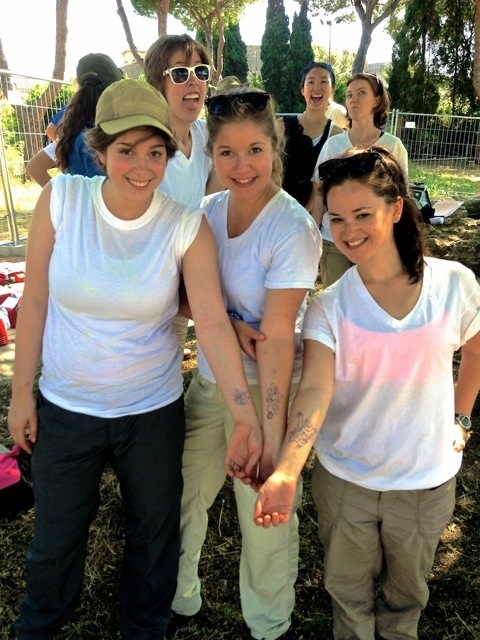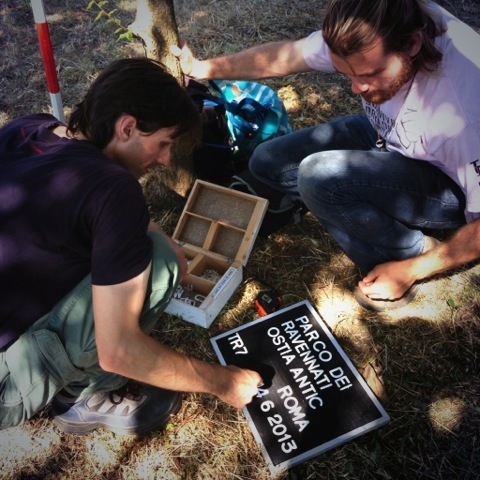One of the great things about living in Rome is that you frequently discover something new in a nook or cranny of the city that you think you know inside and out. A good example is the Roman Forum, a place I’ve visited dozens of times over the past 20 years. I first started visiting the Forum before the fencing was erected around all of the monuments. You could walk all over the Basilica Julia, pound the Augustan pavement of the square, and admire the blobs of melted bronze on the floor of the Basilica Aemilia, possibly the remains of coins knocked to the ground during Alaric’s sack of Rome in AD 410. There was also that golden period, between 1998 and 2008, when the Forum was open to the public for free all day long, acting as just another way to get from Via dei Fori Imperiali to the Colosseum valley.
So I thought I’d seen everything, including—thanks to my position at AIRC—many special structures and ongoing excavations closed to the public. A couple of weeks ago I was surprised to learn, while reading a recent book about the Forum, that the church of San Lorenzo in Miranda, which occupies the Temple of the Deified Antoninus and Faustina, is open to the public, but for only two hours a week (Thursdays 9-11). After kicking myself for never having thought to investigate that possibility, I visited the church on the next Thursday and was received by a very formal but friendly gentleman from a bygone era who gave me a rapid tour of the artistic treasures housed in the church (as well as an earful about its increasing isolation in the archaeological zone) and then turned me loose at the old doorway facing out onto the Forum, now a balcony floating about 25 feet above the ancient levels. Although the view is obscured by the columns of the porch, the experience is nevertheless a feast for the eyes, offering a fresh and fascinating perspective on the temple itself, the Forum, and the Palatine hill. In Rome, fortune really does favor the bold. And the curious.
~Hidden Jewels is a monthly series by Albert Prieto, AIRC Associate Director of Archaeology, as he investigates the hidden secrets of Rome that are right in front of us. albert[at]romanculture.org
















